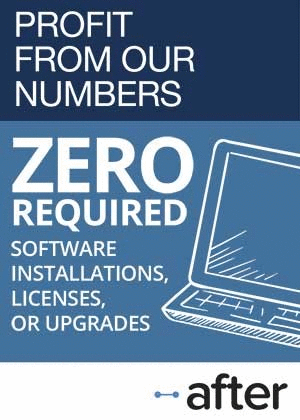Disk Drive & Semiconductor Report: Warranty costs are falling for most of the high tech component makers, both in dollars spent and as a percent of sales. And unlike in the auto industry, the computer OEMs are not yet as accomplished at pushing their warranty costs back onto their parts suppliers.
The top computer makers we profiled in last week's newsletter seem to have mastered the art of controlling their warranty costs. So what about their suppliers?
It seems to be a split decision. Semiconductor makers are paying out more, but because sales are soaring, it's a smaller percentage of their total revenue. Disk drive makers are paying out about the same amount, but they're setting less aside for future costs.
Now that all the data is in, it's clear that disk drive and data storage system makers together paid out just slightly more for warranty claims in 2010 than they did in 2009. The claims total for the disk drive sector was $592.4 million last year, up from $592.2 million in 2009.
Their combined warranty accruals, meanwhile, took a big dip in 2010, falling from $622 million in 2009 to $568 million last year. That's nearly a 9% drop, but as can be seen in Figure 1 below, accrual totals have been quite volatile in this industry sector over the past eight years.
Figure 1
Warranty in the Data Storage Sector
Accruals Made by U.S.-based Companies
(in US$ millions, 2003-2010)
Accruals actually peaked back in 2005, though the total in 2008 came awfully close to topping it. The decline in 2006-2007 doesn't seem to follow any obvious trend, though disk drive manufacturers have been gradually reducing their accrual rates over the years.
Declining Reserve Balances
Warranty reserves are also declining in this sector. The peak balance of $953 million came in 2008, and was followed by a 3.3% decline in 2009 and another 6.6% decline in 2010.
Of the top five disk drive and data storage system manufacturers, only Western Digital Corp. has been increasing its warranty reserve balance in recent years. Seagate Technology, EMC Corp., NetApp Inc. and SanDisk Corp. have each chosen to reduce their warranty reserves from the peak levels seen in 2007 or 2008.
In Figure 2, we've charted the year-ending warranty reserve fund balance for the years 2003 to 2010, calculated by adding together the balances reported by 42 current and former disk drive and data storage system manufacturers.
Figure 2
Warranty in the Data Storage Sector
Reserves Held by U.S.-based Companies
(in US$ millions, 2003-2010)
With both claims and accruals declining, it's no surprise that the balance in the reserve funds would also decline. Part of the reason, of course, is the sales downturn seen in 2008-2009. But long before the name Lehman became a bad word, manufacturers in this sector were reducing their warranty expenses -- not only in terms of how many dollars was spent, but also as a percentage of sales.
In Figure 3, it's pretty clear that the companies in this sector have been quite successful when it comes to managing their warranty expenses. Over the past eight years, the average claims rate has declined from 2.7% in 2003 to under 1.2% in 2010. The average accrual rate has fallen from a peak of 2.6% to a trough of 1.1%.
Figure 3
U.S.-based Data Storage Companies
Average Warranty Claims & Accrual Rates
(as a % of product sales, 2003-2010)
What makes it all the more surprising is that this massive decline occurred in spite of the fact that disk drive warranties in recent years have been getting longer, and therefore more costly to their issuers. Seagate was one of the first to go to five years, up from three years and -- way back when -- only one year. The only way to provide longer warranties and still enjoy lower costs is if the product is built better. So data storage companies definitely have something to celebrate.
Semiconductor Warranties
The makers of semiconductors, printed circuit boards, and the machines that actually manufacture the units have a somewhat different story to tell. For them, all three warranty metrics are up. Claims grew 6.7% to $673 million in 2010, while accruals jumped an astounding 27% to $839 million.
The claims data for both the disk drive and semiconductor sectors can be found in Figure 9 of the April 1 newsletter. The accrual data for semiconductors is below in Figure 4.
Figure 4
Warranty in the Semiconductor Sector
Accruals Made by U.S.-based Companies
(in US$ millions, 2003-2010)
The 145 current and former manufacturers we track in this sector have chosen to accrue more than $800 million during five of the past eight years. Were it not for the big dip seen in 2009, it would be six out of eight.
Amazingly, though, last year's 27% gain in accruals wasn't the biggest ever. That title goes to 2003-2004, when accruals rose by 51%, from $544 million to $824 million in a single year.
Note that the vertical scale on these charts has been stretched in order to better show the changes from year to year. It would look much less dramatic were that not done.
Warranty Reserves
In terms of warranty reserves, one would expect that with claims rising and accruals rising faster, the balance in all these companies' reserve funds would also be rising. And the trend doesn't disappoint. In Figure 5, we see that warranty reserves set a new record in 2010, rising from $629 million to $772 million -- a 23% gain.
Figure 5
Warranty in the Semiconductor Sector
Reserves Held by U.S.-based Companies
(in US$ millions, 2003-2010)
The surprise in the data is how erratic and seemingly seasonal the warranty claims and accrual rates have been as a percentage of sales. In Figure 6, the rates bounce around from 1.45% back in 2003 to 0.5% in 2010. Or would they be bouncing around from 0.9% in 2003 to 1.2% in 2010? Both statements are true, as the data below reveals.
Figure 6
U.S.-based Semiconductor & PCB Companies
Average Warranty Claims & Accrual Rates
(as a % of product sales, 2003-2010)
We have no explanation for the volatility and seasonality of the data in Figure 6. Readers who have a theory should send it in. It's not the weather outside, as it is with products like lawn mowers, motorcycles and snowmobiles. And it's not the school calendar, as it is with medical equipment. So what is it?
Part of the reason may be the fact that major players such as Applied Materials Inc., Novellus Systems Inc., and Advanced Micro Devices Inc. all end their fiscal years in December, and perhaps they sweep all they can into their warranty accounts before the books close?. But Nvidia Corp. and Lam Research Corp. both end their fiscal years in the second quarter. And in recent years, Nvidia has been the biggest warranty provider in this sector.
The real reason may simply be the stretched vertical scale used in Figure 6. The same data is repeated at the bottom of Figure 7 using a different vertical scale, and it appears no more volatile than the others.
Computer Supplier Recovery?
Finally, we wanted to compare some of this week's data with the computer OEM warranty data contained in last week's newsletter. Our theory is that the OEMs, whether they're making cars, airplanes, computers or household appliances, always seem to suffer the highest warranty costs in their industry.
In the computer industry, the makers of disk drives and semiconductors are parts suppliers to the makers of desktops and laptops. Think of the disk drive makers as the engine and transmission manufacturers. And think of the semiconductor and printed circuit board makers as the parts suppliers.
Back in the April 7 newsletter, we pointed out the gap between the percentage of revenue that warranty consumes for the automotive OEMs and their suppliers. And we pointed out that it's narrowing, as the auto OEMs get better at pushing their costs back onto their suppliers.
In the computer industry, the trend is less conclusive. As can be seen in Figure 7, there is a definite gap between the computer OEMs and their suppliers. And the component suppliers have much lower relative costs than the "drive train" manufacturers.
However, the gap doesn't seem to be changing much. It averages 1.3% between the computer OEMs and the disk drive makers, and 2.1% between the computer OEMs and the semiconductor companies. And it's very close to those averages right now.
Figure 7
Computer OEM vs. Supplier Warranties
Claims & Accrual Rates, 2003-2010
(as a percentage of product revenue)
So while the gap exists, nobody seems to be doing much about it. Or more precisely, almost everybody is reducing their warranty costs in parallel, so the gap remains relatively unchanged between these sectors.
Nvidia's Misfortune
The sole exception to this downward trend seems to be Nvidia, which saw its warranty costs soar in late 2008. And while that company's misfortune seems to have prevented the semiconductor averages from declining by much recently, the gap since 2008 between the OEMs and the semiconductor makers is only slightly below the eight-year average. Were it not for Nvidia, the gap would have widened.
Eighth Annual Product Warranty Reports
Here are the links to the online editions of all eleven parts of this series:
Readers needing more detailed snapshots of individual companies in either a PowerPoint or Excel format are invited to view the list of charts and spreadsheets available on the Warranty Statistics page.
| 














